Birth name Edward Mallory Almond Name Edward Almond | Years of service 1916-1953 Nickname(s) Ned | |
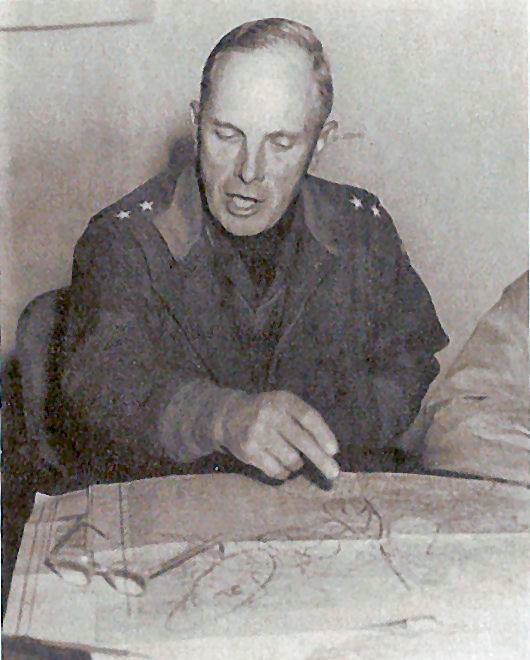 | ||
Born December 12, 1892Luray, Virginia ( 1892-12-12 ) Allegiance United States of America Similar People | ||
Lieutenant General Edward Mallory "Ned" Almond (December 12, 1892 – June 11, 1979) was a senior United States Army officer who fought in both World War I and World War II, where he commanded the 92nd Infantry Division. He is perhaps best known as the commander of the U.S. X Corps during the Korean War.
Contents
- Early biography
- World War II and postwar occupation in Japan
- Korean War and X Corps
- Post Korea
- In popular culture
- References
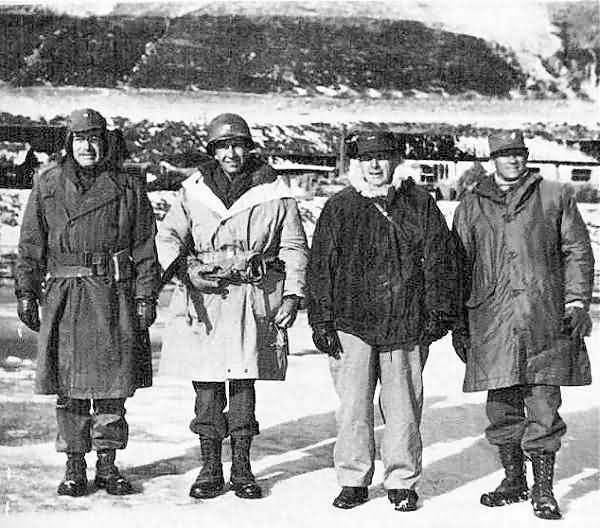
Early biography
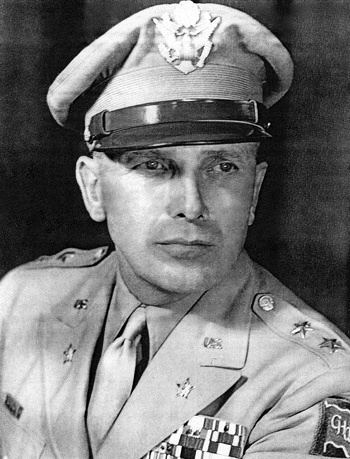
Born in Luray, Virginia, Almond graduated from the Virginia Military Institute (VMI) in 1915 and became an infantry officer in 1916, serving in France with the 4th Division during the final months of World War I.

From 1919 to 1924, Almond taught military science at Marion Military Institute. After attending Infantry school at Fort Benning, he continued teaching at Marion Military Institute until 1928.
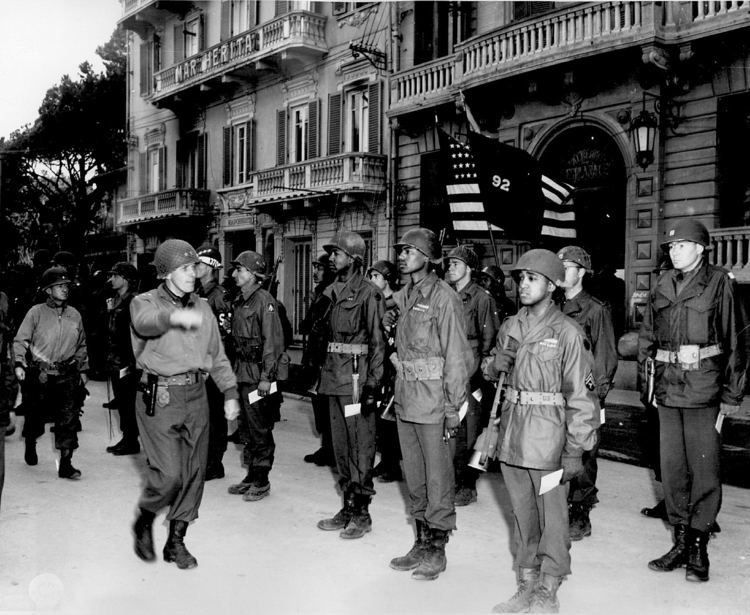
He graduated from the Command & General Staff School, Fort Leavenworth, Kansas, 1930. After a tour of duty in Philippines he attended the Army War College in 1934.
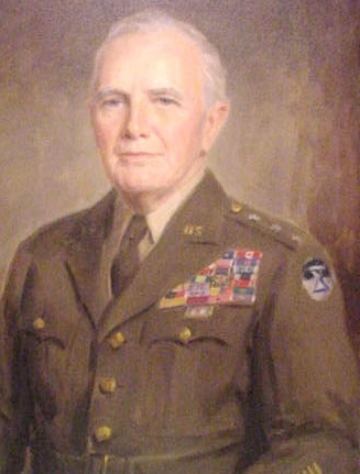
From 1934 to 1938 he was attached to the Intelligence Division of the General Staff. He was promoted to lieutenant colonel in September 1938, he completed the course at Naval War College in 1940, and in January 1941 was assigned staff duty at VI Corps HQ, Providence, Rhode Island.
He was promoted to the temporary rank of colonel in October 1941, and then brigadier general March 1942, when he was named assistant commander of the 93rd Infantry Division in Arizona.
World War II and postwar occupation in Japan
Almond was for a time highly regarded by George Marshall, also a VMI graduate, who was Army Chief of Staff during World War II. This regard accounted in part for Almond's promotion to major general ahead of most of his peers and subsequent command of the 92nd Infantry Division, made of almost exclusively African-American soldiers, a position he held from its formation in October 1942 until August 1945. He led the division in combat in the Italian campaign of 1944-1945.
Although George Marshall picked Almond for this assignment because Marshall believed Almond would excel at this difficult assignment, the division performed poorly in combat with Almond blaming the division's poor performance on its largely African-American troops, echoing the widespread prejudice in the segregated Army that blacks made poor soldiers—and went on to advise the Army against ever again using African-Americans as combat troops. Almond told confidants that the division's poor combat record had cheated him of higher command.
"No white man wants to be accused of leaving the battle line. The Negro doesn't care.... people think being from the South we don't like Negroes.(sic.) Not at all, But we understand his capabilities. And we don't want to sit at the table with them."
In 1946 Almond was transferred to Tokyo as chief of personnel at General Douglas Macarthur's headquarters, normally a dead-end job. Almond very effectively handled the sizable challenge of staffing the occupation forces in Japan as American forces rapidly demobilized, standing out among MacArthur's lackluster staff. Having won MacArthur's confidence as capable and loyal, Almond was the logical choice to become Chief of Staff in January 1949, when the incumbent, Paul Mueller, rotated home.
Korean War and X Corps
After the initial North Korean attack in June 1950, United Nations forces were forced to withdraw and eventually fell back to the Pusan Perimeter.
Macarthur decided to counterattack with an amphibious invasion at Inchon in November. The invasion force, consisting of the 1st Marine Division and the 7th Infantry Division (United States), was originally named "X Force" and was placed under the command of General Almond. Because the name X Force was confusing to logistics officers, upon Almond's suggestion, the formation was re-designated as X Corps. MacArthur split X Corps from the 8th Army, then placed Almond, who had no experience with amphibious operations, in command of the main landing force just before the landings.
Almond earned the scorn of Marine officers when, during the early phase of the Inchon landing, he asked if the amphibious tractors used to land the Marines could float. The invasion succeeded, but Almond did not pursue effectively and most of the routed North Korean Army escaped northwards.
During this time, Major General O. P. Smith, commander of the 1st Marine Division, which was part of X Corps (and therefore under Almond's overall command) from October until December 1950 had many conflicts with Almond.
Almond also had a poor relationship with Lieutenant General Walton Harris Walker, commander of the 8th Army.
Historians have criticized Almond for the wide dispersal of his units during the X Corps advance into north-eastern part of North Korea, in November–December 1950. This dispersal contributed to the defeat of X Corps by Chinese troops, including the destruction of Task Force Faith, and the narrow escape of the Marines at the Battle of Chosin Reservoir. Almond was slow to recognize the scale of the Chinese attack on X Corps, urging Army and Marine units forward despite the huge Chinese forces arrayed against them. Displaying his usual boldness, he underestimated the strength and skill of the Chinese forces, at one point telling his subordinate officers "The enemy who is delaying you for the moment is nothing more than remnants of Chinese divisions fleeing north. We're still attacking and we're going all the way to the Yalu. Don't let a bunch of Chinese laundrymen stop you." As stated by a close associate: "When it paid to be aggressive, Ned was aggressive. When it paid to be cautious, Ned was aggressive."
Despite these mistakes and partly due to his close relationship with General MacArthur, the new Eighth Army commander Lieutenant General Matthew Ridgway retained Almond as head of X Corps. Ridgway admired Almond's aggressive attitude, but felt he needed close supervision to ensure his boldness did not jeopardize his command. Almond and X Corps later took part in the defeat of the Chinese offensives during February and March 1951, as well as the Eighth Army's counter-offensive, Operation Killer. Almond was promoted to lieutenant general in February 1951.
Future general and secretary of state Alexander Haig served as aide-de-camp to General Almond in the Korean War.
Post Korea
In July 1951, Almond was reassigned and became president of the U.S. Army War College.
He retired from the Army in 1953 and worked as an insurance executive until his death in 1979.
He is interred in Arlington National Cemetery.
